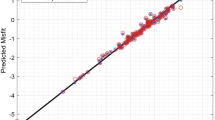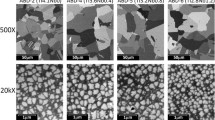Abstract
Ingot quality is characterized by SPC evaluations; meaning Structure (S), Property (P), and Composition (C). Structure-property studies are classified as “sensitive” attributes while composition is considered to be an “insensitive” parameter. For example, it is common to hear the phrase that global composition is “insensitive” to structure and property values. For superalloys, structural analyses are applied using the scanning electron microscope (SEM) to determine both size, shape and distribution effects for the gamma prime phase. Examination of properties requires mechanical tests for strength, hardness, toughness and, so forth. However, for investigations on composition, the scientific community still depends on optical emission spectroscopy (OES) for measurements of global results using arc burns to represent bulk volume. This leads to the obvious question…. What needs to be done to better quantify the OES results? Further…. How can the controlling microconstituents of a superalloy be better related to the overall composition results for an improved qualification of ingots? This article addresses these needs and priorities. And, the said article is offered as a contribution to the sum of total knowledge.







Similar content being viewed by others
References
C.G. Bieber and J.J. Galka, “Cast Nickel Base Alloy” Assigned to the International Nickel Company of New York, NY, USA Patent Number 3,619,182, Filed May 1968, Granted Nov 1971
L. Sheimbob and T. Cannon, EXTEX LTD, Gilbert, AZ, “Choice Alliance Dropping Cost of Parts and Maintenance in TR2 Terror Response Technology Report,” Aviation Today, Dec 2004
E. Lvov and D. Norsworthy, Influence of Service-Induced Microstructural Changes on The Aging Kinetics of Rejuvenated Nickel-based Superalloy Gas Turbine Blades, J. Mater. Eng. Perform., 10(3), 2001 June, ASM International, Materials Park, OH, 44073-0002, USA
E. Lvov, V.I. Levit, and M.J. Kaufman, Mechanism of Primary MC Carbide Deposition In Ni-base Superalloys, Metall. Mater. Trans. A, ASM International, Materials Park, OH, 2nd ed., 1999, p 125
C. Hays, Effects of {VIM + EBCHR} Refining for IN-738 Alloy, Accepted for publication in J. Mater. Eng. Perform., ASM International, Materials Park, OH, 44073-0002, USA
C. Hays, United States Patent Office, “Gas Turbine Blades By Means Other Than Casting,” US60/879,448, Patent Pending Status, Jan 2007
C. Hays, Size and Shape Effects for Gamma Prime in Alloy 738, Accepted for publication in J. Mater. Eng. Perform., ASM International, Materials Park, OH, 44073-0002, USA
B. Henderson and G.F. Imbush, Optical Spectroscopy of Inorganic Solids, Clarenton Press, Oxford University Press, Oxford, England, OX26DP, 1989, p 4
V. Thomsen, Walther Gerlach and The Foundations of Modern Spectrochemical Analysis, Spectroscopy, Dec 2002, p 1–8
F. Rhines, Phase Diagrams in Metallurgy, McGraw-Hill Book Company, 1956, p 110–112
Author information
Authors and Affiliations
Corresponding author
Rights and permissions
About this article
Cite this article
Hays, C., Rudnicki, A. Evaluating Alloy Composition Using The Gibbs Triangle. J. of Materi Eng and Perform 17, 566–571 (2008). https://doi.org/10.1007/s11665-007-9171-7
Received:
Revised:
Accepted:
Published:
Issue Date:
DOI: https://doi.org/10.1007/s11665-007-9171-7




